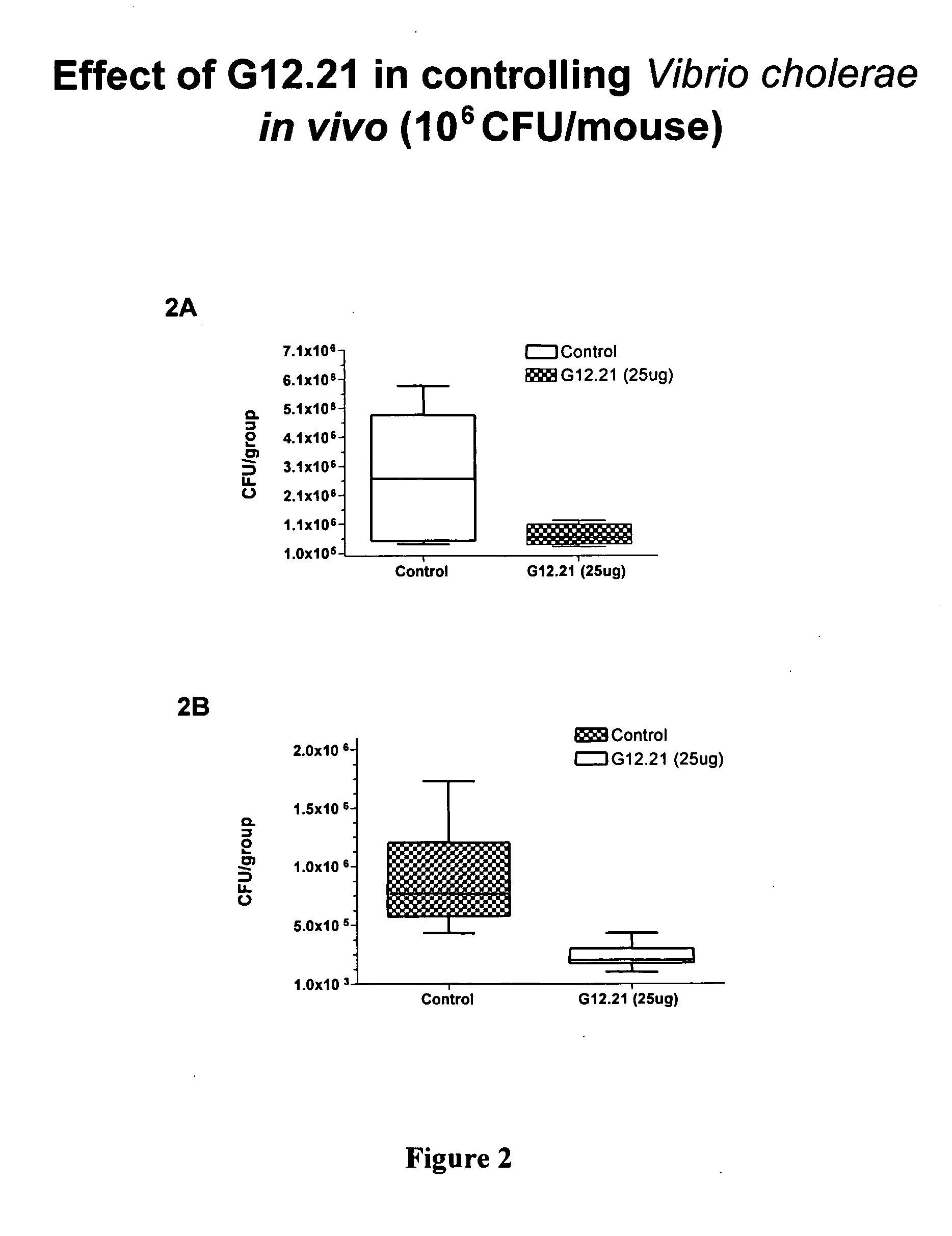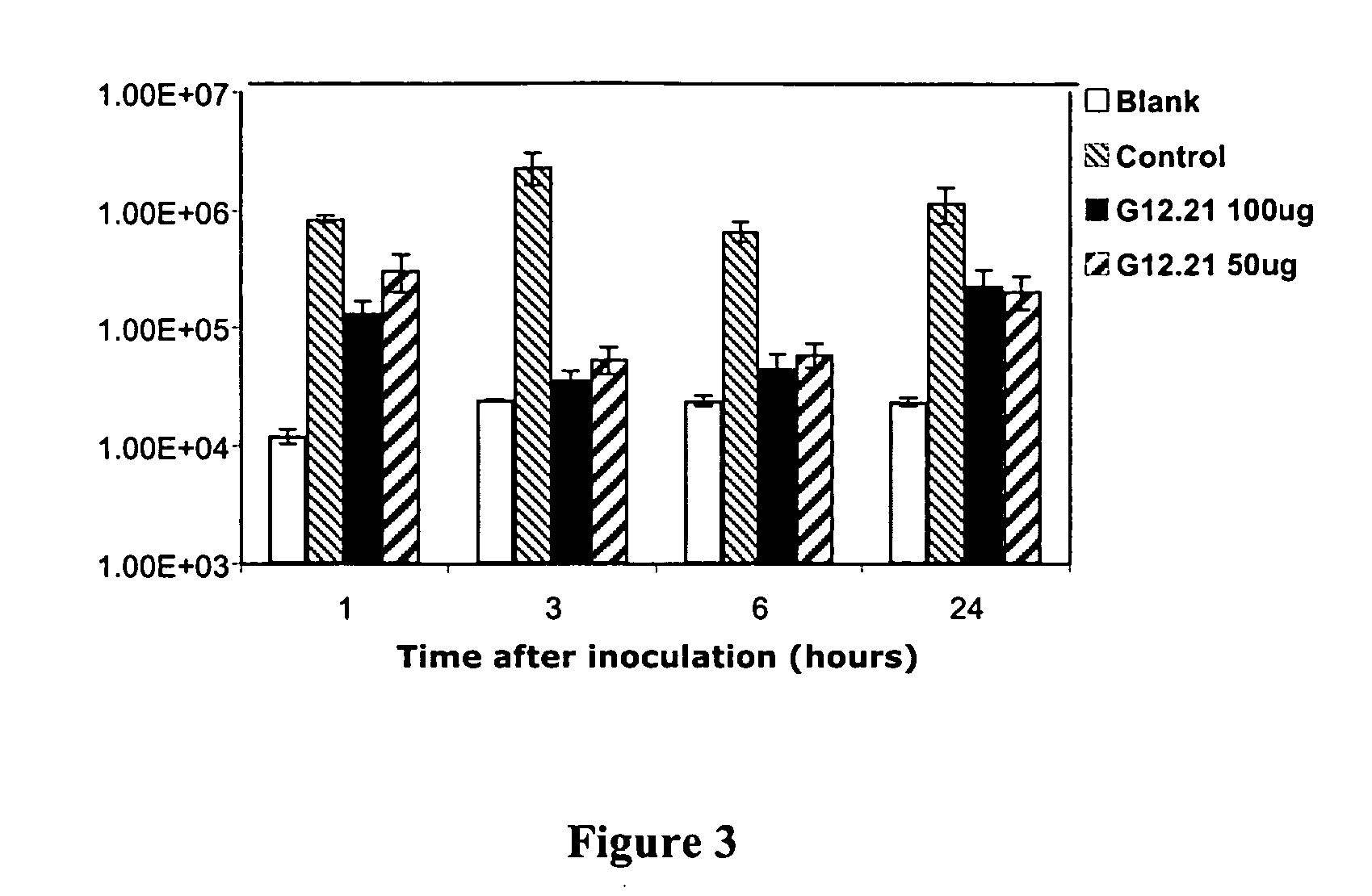Antimicrobial peptides
a technology of antimicrobial peptides and peptides, which is applied in the direction of peptide/protein ingredients, peptide sources, applications, etc., can solve the problems of poor graft outcome and acute rejection, and achieve the effects of rapid killing a broad spectrum of microorganisms, low or no effect on mammalian cells, and high activity towards microorganisms
- Summary
- Abstract
- Description
- Claims
- Application Information
AI Technical Summary
Benefits of technology
Problems solved by technology
Method used
Image
Examples
Embodiment Construction
Sequence Notations
[0025] SEQ ID NO: 2 is a subsequence of human granulysin:
1 / QRSVSNAAT RVCRT / 2 / GRSRW / 3 / RDVCRNFMRR / 4 / YQSRVIQGLV / 5 /
[0026] Helix 3 is underlined. As can be seen by matching the sequences given in Table 2:
[0027] G8 extends from 1 to 2;
[0028] G11 extends from 3 to 4;
[0029] G12 extends from 3 to 5;
[0030] G13 extends from 1 to 3;
[0031] G14 extends from 2 to 4;
[0032] G20 extends from 2 to 5; and
[0033] G21 extends from 1 to 5.
[0034] The peptide sequences given here are in standard single letter amino acid designation, using capital letters (IUPAC-IUB Commission on Biochemical Nomenclature (CBN), A One-Letter Notation for Amino Acid Sequences, 1968, Arch. Biochem. Biophys. 125(3), i-v (1968). Lower case letters indicate D-amino acids. Various underlining and bold designations are explained in the text.
[0035] The standard single letter and three letter codes for amino acids are used herein and are as follows:
A (Ala) AlanineC (Cys) CysteineD (Asp) Aspartic ...
PUM
| Property | Measurement | Unit |
|---|---|---|
| pH | aaaaa | aaaaa |
| time | aaaaa | aaaaa |
| hydrophobic | aaaaa | aaaaa |
Abstract
Description
Claims
Application Information
 Login to View More
Login to View More - R&D
- Intellectual Property
- Life Sciences
- Materials
- Tech Scout
- Unparalleled Data Quality
- Higher Quality Content
- 60% Fewer Hallucinations
Browse by: Latest US Patents, China's latest patents, Technical Efficacy Thesaurus, Application Domain, Technology Topic, Popular Technical Reports.
© 2025 PatSnap. All rights reserved.Legal|Privacy policy|Modern Slavery Act Transparency Statement|Sitemap|About US| Contact US: help@patsnap.com



